Whether you’re thru-hiking across the country or heading out on a quick weekend jaunt, trekking poles can add a lot of stability and comfort to your hike. Trekking poles aren’t essential, but many backpackers love them for a variety of reasons. They help reduce impact on your knees, increase balance on difficult terrain or while fording rivers, and some hikers use trekking poles to pitch ultralight tents.
Many trekking poles are pretty similar in design, so it can be a daunting task to find you perfect pair. But we’ve used dozens of different trekking poles over thousands of hiking miles, and we’re confident that our experience will help you find exactly what you need.
Quick Picks for Trekking Poles
Check out this quick list of our favorites if you’re in a hurry, or continue scrolling to see our full list of the best trekking poles with in-depth reviews.
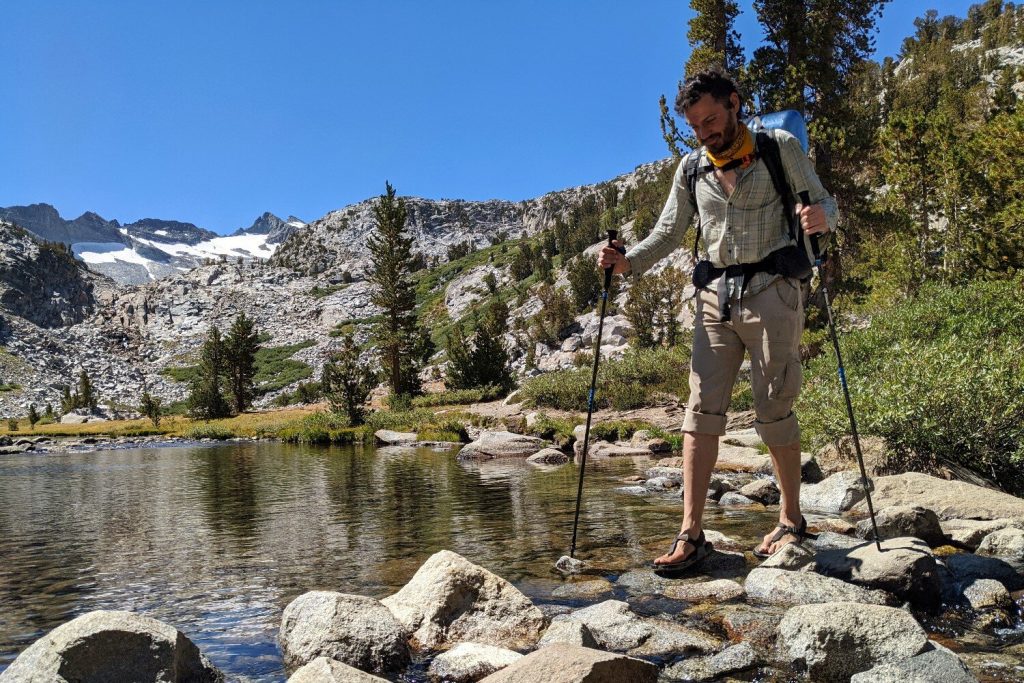
What’s New
There have been some big changes here on our Best Trekking Poles list. Most notably Black Diamond’s Pursuit poles replaced one of our longtime favorites, the Black Diamond Trail Ergo Cork, and took over the number two spot. We also added LEKI’s Makalu Lite poles as our most durable trekking pole pick. The Fizan Compact 3 moved down the list significantly after we ran into an issue with both of our test pairs getting stuck closed due to moisture on the inside. Read our updated blurb to find out more. We’ve also added a ton of new photos from our recent adventures.
Best Trekking Poles of 2023
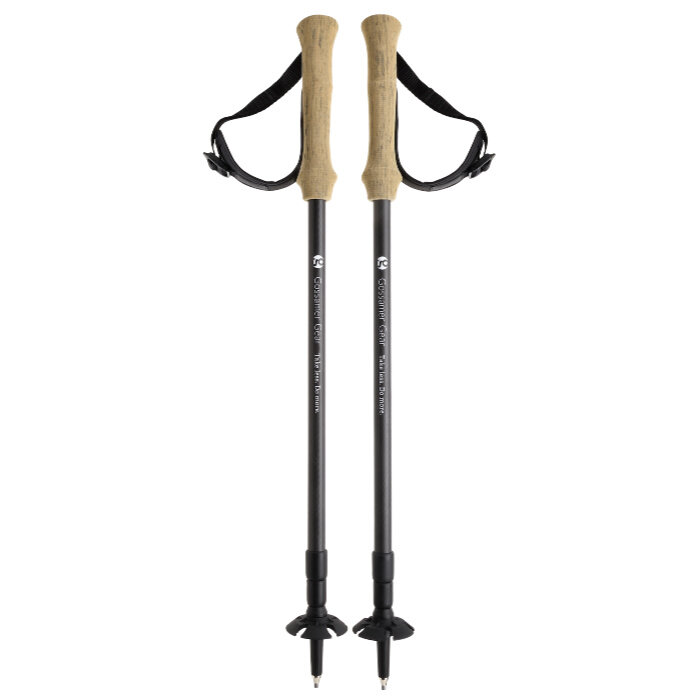
Gossamer Gear LT5
Best ultralight trekking poles
Price: $195
Weight (Pair): 10.6 oz.
Shaft Material: Carbon Fiber
Grip Material: Foam
Collapsed Length: 23.5 in.
Pros
- Ultralight
- Comfy handles
- Easy to adjust
- Very durable for the weight
Cons
- Expensive
- Carbon fiber isn’t as tough as aluminum
The Gossamer Gear LT5 carbon fiber trekking poles are incredibly light and comfortable. They’re easy to adjust with two simple twist-locks, and the foam handles are comfortable to hold on long hikes.
The LT5s are pretty pricey, but the excellent strength-to-weight ratio makes them worth the cost for anyone covering long distances with a light load. On top of that, Gossamer Gear offers replacements sections – top, middle, and bottom – so you can easily (and affordably) replace broken or worn out parts instead of replacing the whole set of poles.
We’ve taken ours a few thousand miles on some pretty gnarly trails, and they’ve still got plenty of distance left in them. Check out our full review here.
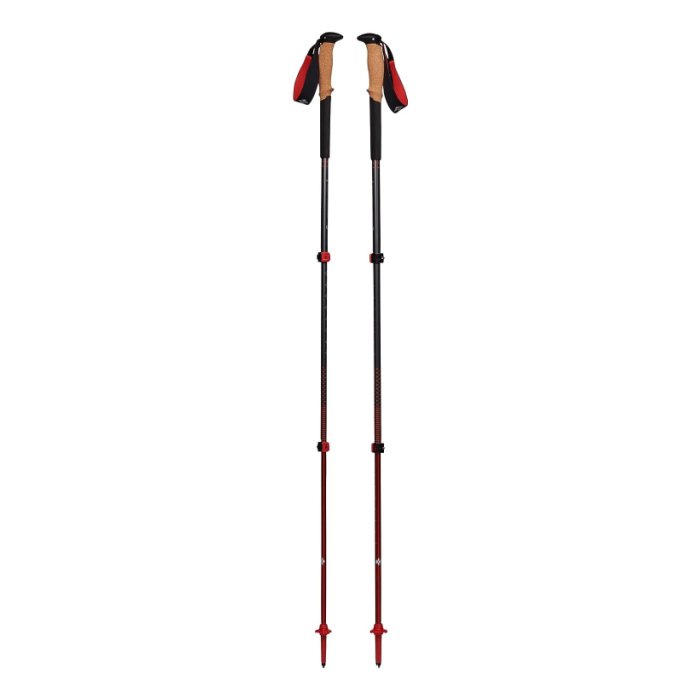
Black Diamond Pursuit
Best aluminum trekking poles
Price: $170
Weight (Pair): 1 lb. 0.4 oz.
Shaft Material: Aluminum
Grip Material: Cork
Collapsed Length: 22.8 in.
Pros
- Cork grips
- Durable
- Lightweight
- Built-in adjustment tool
- Size options
- Small collapsed length
- Comes with two basket sizes
The Black Diamond Pursuit trekking poles are some of the lightest all-aluminum, cork-handled trekking poles we’ve ever tested. This means you’re getting the best of all worlds – the comfort of cork, the durability of aluminum, and not much added weight over carbon fiber poles.
We’ve always been big fans of trekking poles with cork handles, because this porous material breathes better than foam and wicks moisture away to help prevent blisters. But cork is usually heavier than the foam used for other handles which can leave the poles feeling top-heavy. We’re happy to report that this isn’t the case with the Pursuits, and we were very impressed by the balanced feel the moment we touched carbide tip to trail.
We really couldn’t decide which poles we like more, so the Pursuits are tied for first with the Gossamer Gear LT5s above. The choice for you will come down to what you value more – the weight savings of the LT5s or the more durable build of the Pursuits.
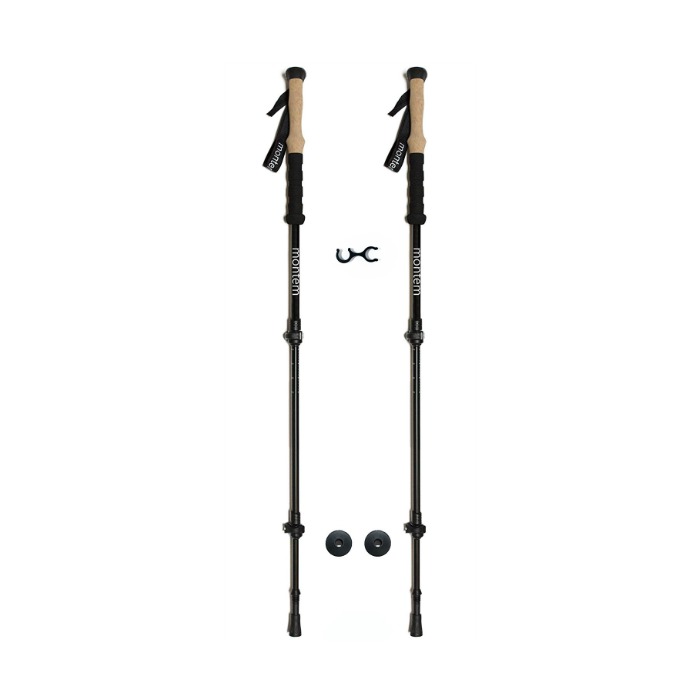
Montem Ultra Strong
Affordable and durable trekking poles
Price: $75
Weight (Pair): 1 lb. 3.2 oz.
Shaft Material: Aluminum
Grip Material: Foam
Collapsed Length: 24 in.
Pros
- Affordable
- Durable
- Easy to adjust
Cons
- Heavy
- Foam grips aren’t as comfy as cork
The Montem Ultra Strong trekking poles are a solid budget buy. They’re durable, compact, easy to use, and much more affordable than the high-end poles on this list. Equipped with a flick-lock lever system, they are collapsible down to two feet, which is pretty good for stowing when not in use. The hand grips are soft and comfortable, but we do tend to prefer cork grips over foam. If you’re new to trekking poles or on a tight budget, the Montem Ultra Strong poles are a great buy.For those looking to shave ounces, Montem also offers Ultralight Carbon Trekking Poles for a surprisingly affordable price.
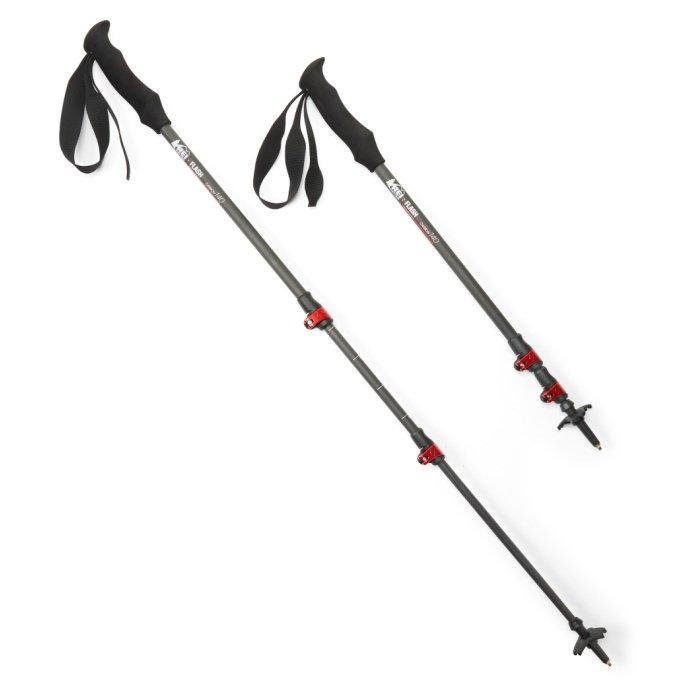
REI Flash Carbon
Affordable and lightweight carbon fiber trekking poles
Price: $159
Weight (Pair): 13.6 oz.
Shaft Material: Carbon fiber & aluminum
Grip Material: Foam
Collapsed Length: 25 in.
Pros
- Affordable for the quality & weight
- Durable
Cons
- Not as compact as some
- Foam grips aren’t as comfy as cork
The REI Flash Carbon trekking poles are a great option for those looking to trim a few ounces without breaking the bank. These poles have a simple and secure flick-lock system and comfortable foam hand grips. They’re made from a combination of carbon fiber and aluminum which makes them decently light while maintaining durability. The Flash Carbon poles also come in a lighter compact version for those who don’t need their poles to be longer than 120 cm.If you’re looking for a budget option and don’t mind carrying a few more ounces, the REI Traverse poles are a solid choice as well.
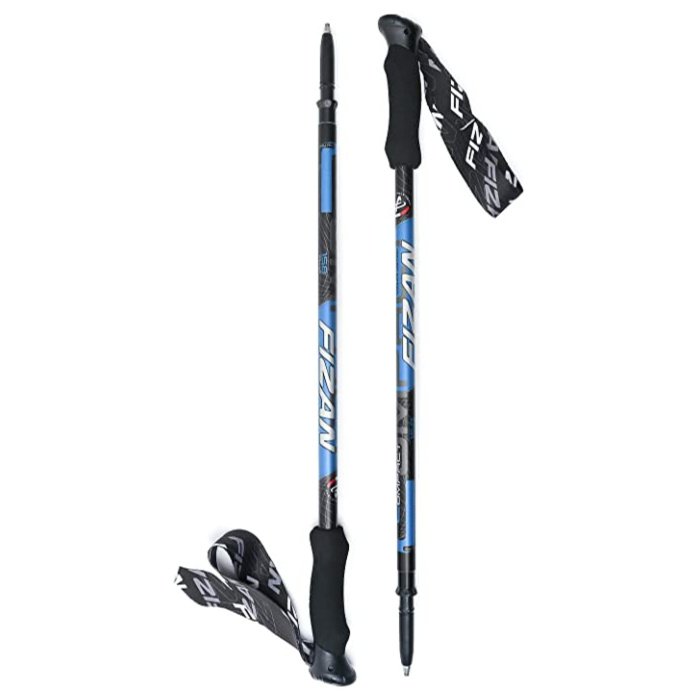
Fizan Compact 3
Best budget trekking poles
Price: $70
Weight (Pair): 11.2 oz.
Shaft Material: Aluminum
Grip Material: Foam
Collapsed Length: 22.8 in.
Pros
- Affordable
- Ultralight
- Easy to adjust
- Small packed size
- Comes with two basket sizes
Cons
- Not as durable as other aluminum poles
- Segments have a tendency to get stuck
The Fizan Compact 3s cost a fraction of the price of other poles in their weight category. And amazingly, they achieve this weight with aluminum construction instead of carbon fiber. This is advantageous since aluminum is more forgiving than carbon fiber when your poles take the full force of your weight for stability or when they get caught between rocks.
These poles are practically identical to our top pick – the Gossamer Gear LT5s – when it comes to functionality, so why don’t the C3s sit at the top of our list?
To start, there aren’t catches at the tops of the pole segments, so it’s surprisingly easy to collapse the Compact 3s too much and get them stuck. On top of that, any moisture left on the poles while they’re fully collapsed can cause them to permanently become stuck closed. This was the fate of both our tester pairs of Compact 3s after about a year and a half of use, so make sure to dry them thoroughly to avoid this pitfall.
That said – as long as you’re careful to avoid that issue – the combination of price and weight on the Compact 3s truly can’t be beat. Check out our full review of the Fizan Compact 3s here.
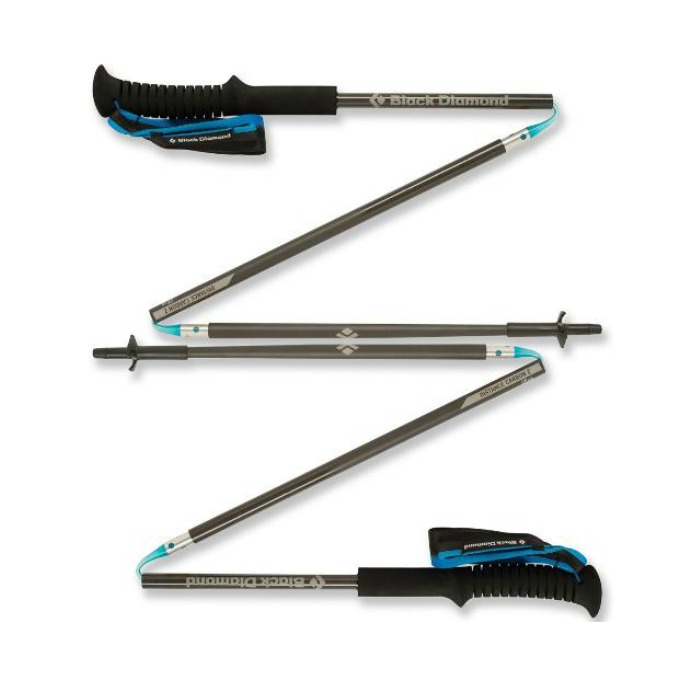
Black Diamond Distance Carbon Z-Pole
Highly packable ultralight trekking poles
Price: $190
Weight (Pair): 9.8 oz.
Shaft Material: Carbon Fiber
Grip Material: Foam
Collapsed Length: 13-17 in.
Pros
- Ultralight
- Small collapsed length
Cons
- Expensive
- Z-pole design takes some getting used to
- Foam grips aren’t as comfy as cork
- Fixed length
At only nine ounces, the Distance Carbon Z-Poles are the lightest trekking poles on our list. The folding Z-pole design allows them to break down to a small size for easy storage, so they’re a great choice for hikers who will only use their poles occasionally. The one downside with these poles is that they come in four different fixed lengths (100-130 cm.), which could be an issue depending on your specific needs. Hikers who use trekking poles to support their shelter should measure carefully to make sure these poles will be the correct length to serve their purposes.
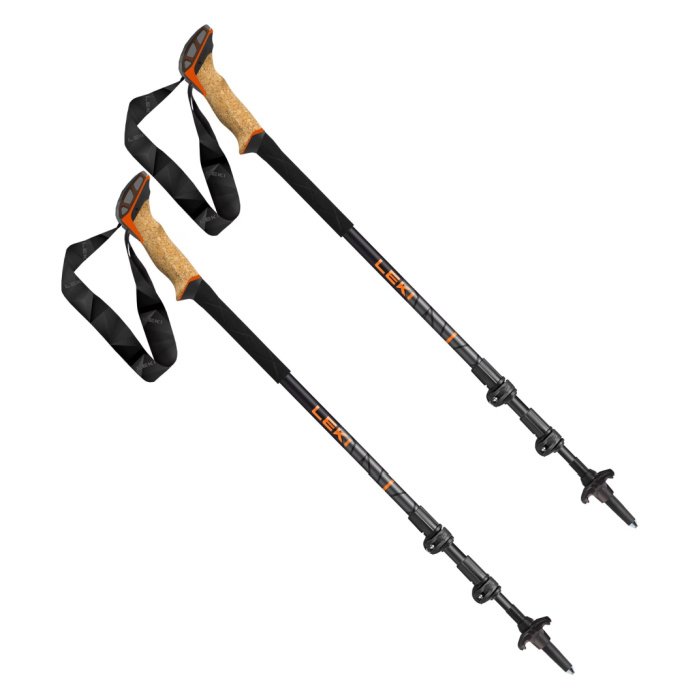
LEKI Makalu Lite
Most durable trekking poles
Price: $150
Weight (Pair): 1 lb. 2 oz.
Shaft Material: Aluminum
Grip Material: Cork
Collapsed Length: 26.3 in.
Pros
- Cork grips
- Durable
- Easy to adjust length
- No tools required for adjusting locks
Cons
- Long collapsed length
- A bit heavy
If you’re particularly hard on gear or often find yourself hiking in places off the beaten path, the LEKI Makalu Lite might be just what you need. These sturdy aluminum poles are some of the most durable we’ve ever tested, and their quality construction is evident from cork grip to carbide tip.
Despite the name, the Makalu Lites aren’t particularly lightweight, but we still think they’re reasonable for how solid they are. They also have a longer collapsed length than most other trekking poles we’ve tested. These traits mean they’re not the best choice for hikers who tend to stow their poles in their backpack for flat sections of trail. Rather, the Makalus are made for hikers who want the added support and stability at all times.
While the Makalus aren’t our first choice for longer hikes (despite the fact that we tested them over a few hundred miles on the Arizona Trail), they’ve still got a lot of great things going for them. Their cork handles are very comfortable, you don’t need tools to tighten the locks in the field when they inevitably loosen up over time, and their durability is second to none.
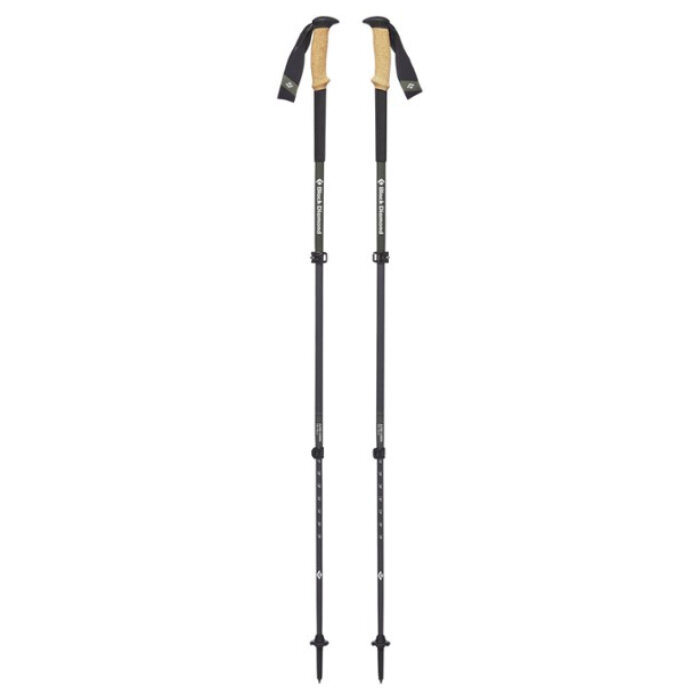
Black Diamond Alpine Carbon Cork
Sturdy trekking poles with comfortable grips
Price: $200
Weight (Pair): 1 lb. 1.1 oz.
Shaft Material: Carbon Fiber
Grip Material: Cork
Collapsed Length: 24 in.
Pros
- Cork grips
- Durable
- Easy to adjust
The Black Diamond Alpine Carbon Cork poles (also available in women’s sizes) are tough 4-season poles that’re incredibly reliable in almost any condition. The easy flick-lock system is secure and makes it simple to adjust the length. Though not the lightest option on the market, these poles are very tough and their grips are quite comfortable. For burly all-weather terrain, these are the poles we’d choose. The Alpines also come in a folding version that’s much more compact and lightweight.
Trekking Pole Comparison Table
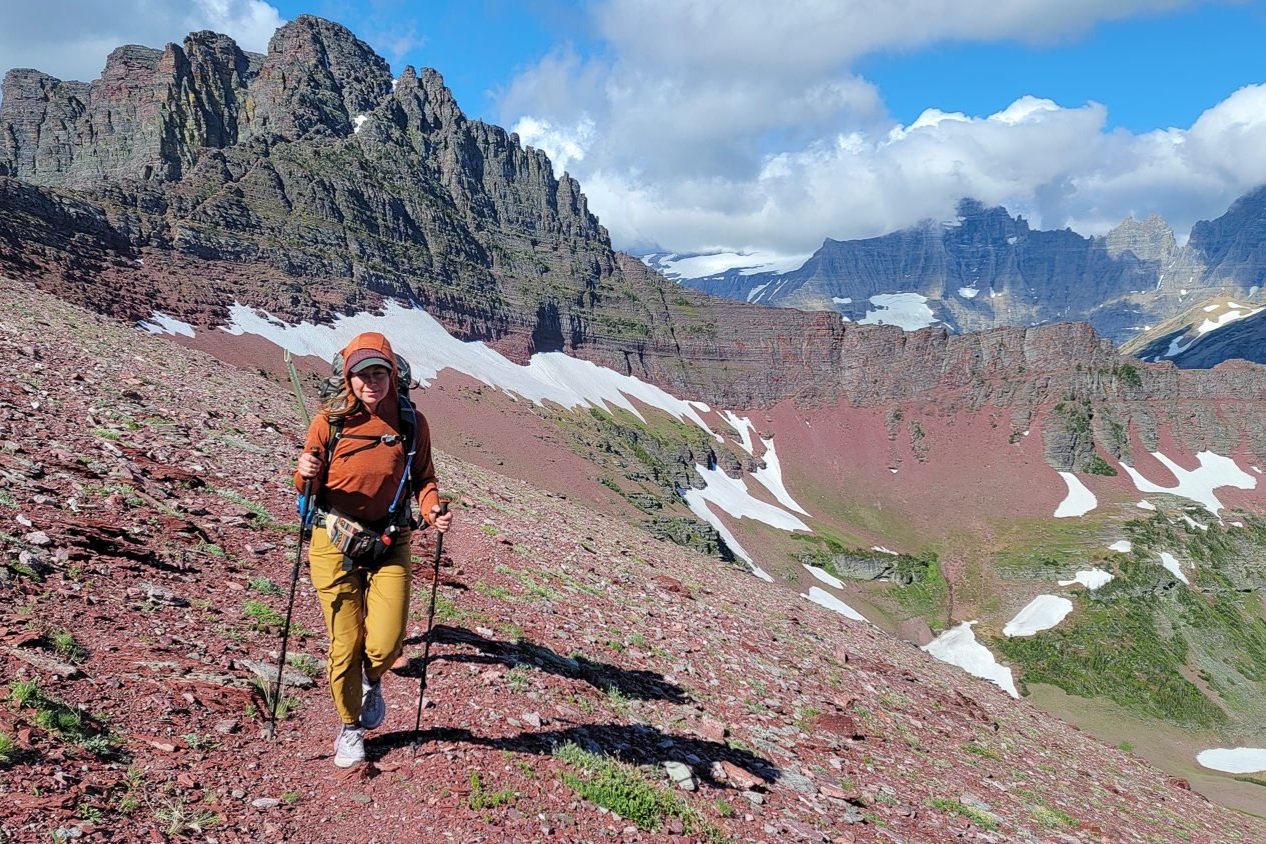
What’s Most Important to You in a Pair of Trekking Poles?
PRICE
We tend to be willing to spend a bit more for a quality pair of trekking poles since we need to be able to trust that they won’t fail if we need to put our body weight on them. Below we recommend a range of dependable trekking poles from budget buys to high-end poles.
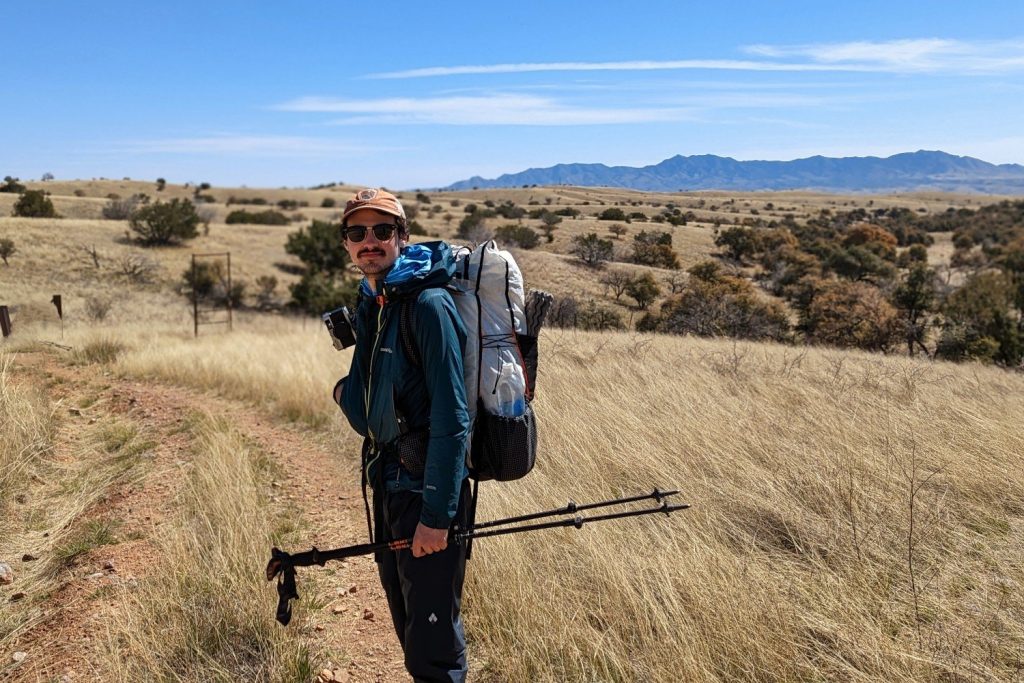
WEIGHT
Weight should be a top consideration when determining the best trekking pole for you. Similar to the theory behind hiking footwear, every ounce matters when you’re lifting your arms thousands of times a day. If you typically only go on short day hikes or you do a lot of winter trekking, a heavier and more durable pair of aluminum poles might be more practical.
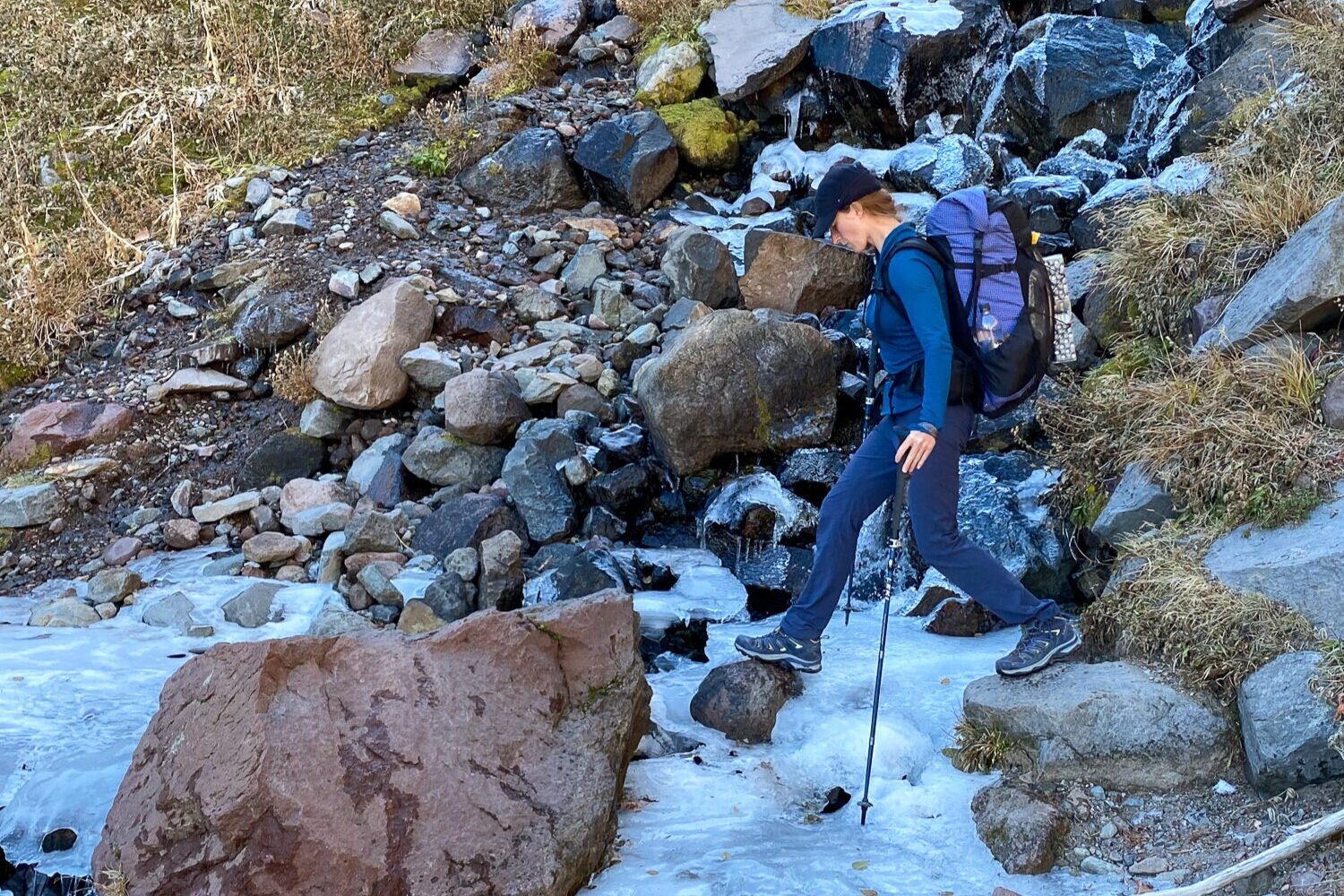
DURABILITY
When you’re crossing a fast-moving stream or balancing on a narrow ridge, it’s important to know that your trekking poles will support you. Carbon fiber poles are lighter and more energy efficient, but they tend to be less durable over the long run. Aluminum poles are heavier, but they tend to be the more durable option and will bend before failing completely.
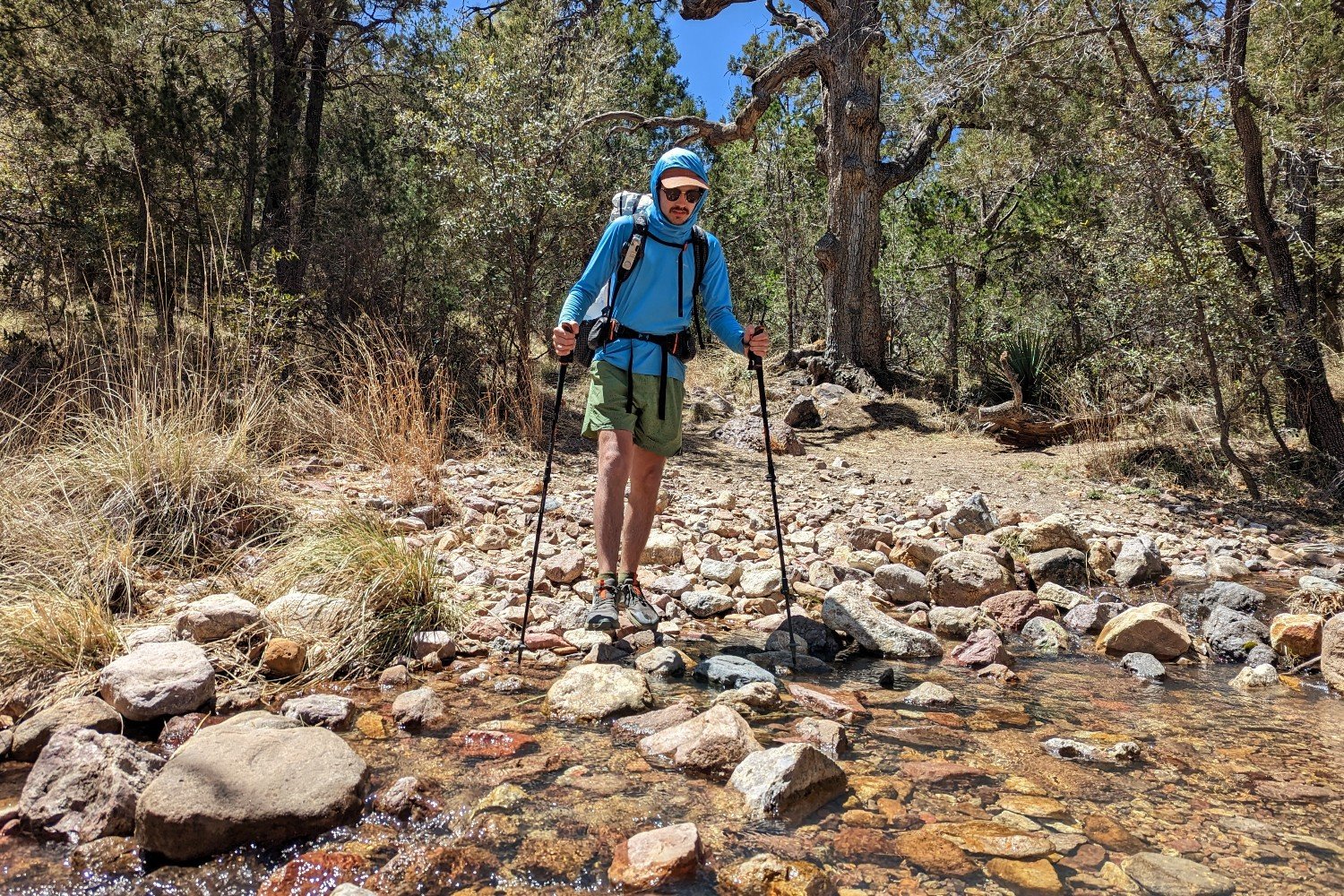
GRIPS
Trekking pole grips create friction against your hands that can lead to sore spots or even blisters, so it’s important to choose poles that feel comfortable. Most trekking pole grips are made from either cork or foam. Cork wins for durability and comfort, while foam is usually more affordable but tends to break down quicker.
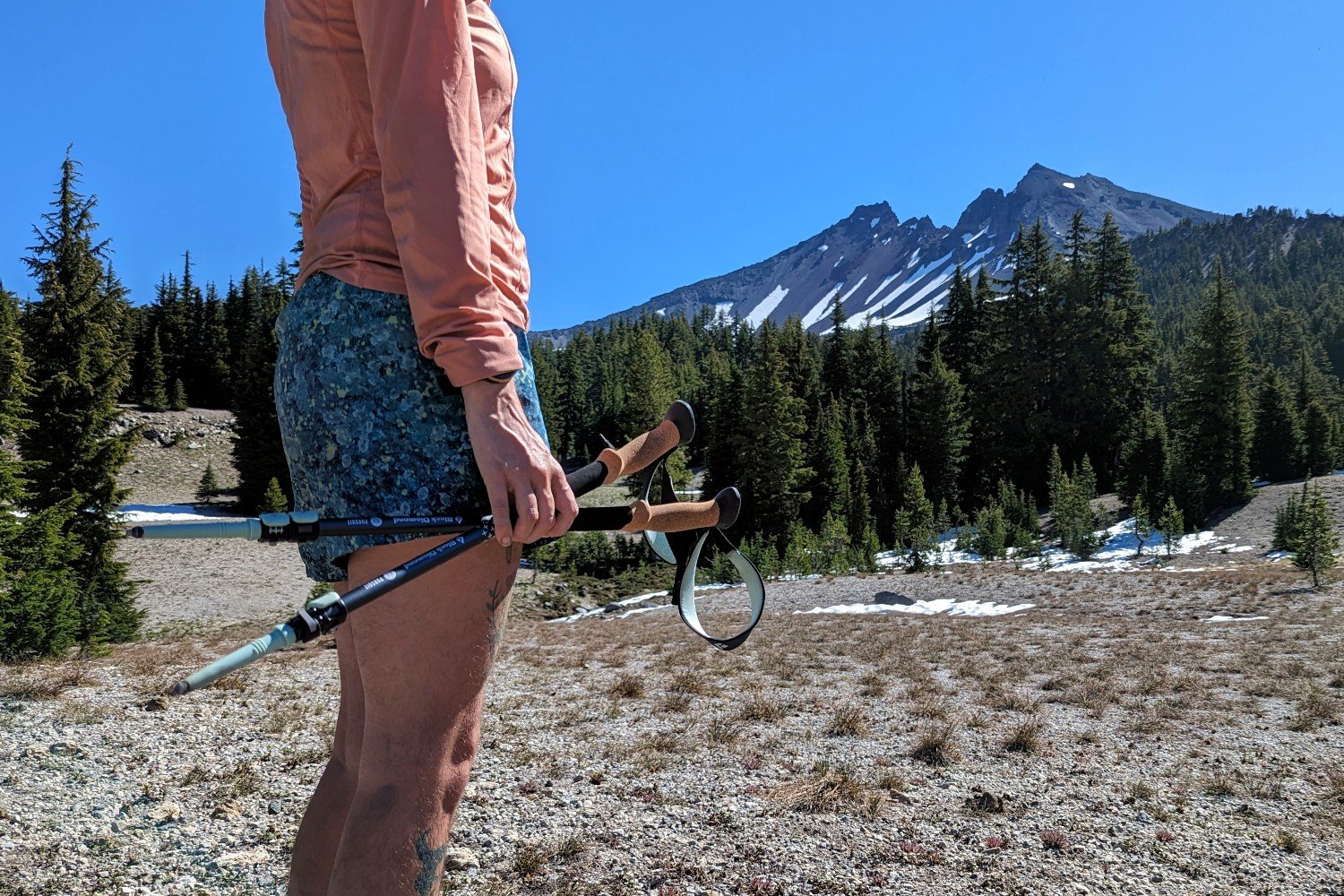
PACKABILITY
When not in use, it’s nice to have trekking poles that can pack down small for storage on the outside of your pack or in luggage for travel. Generally, folding Z-poles offer the best portability with the smallest collapsed length.
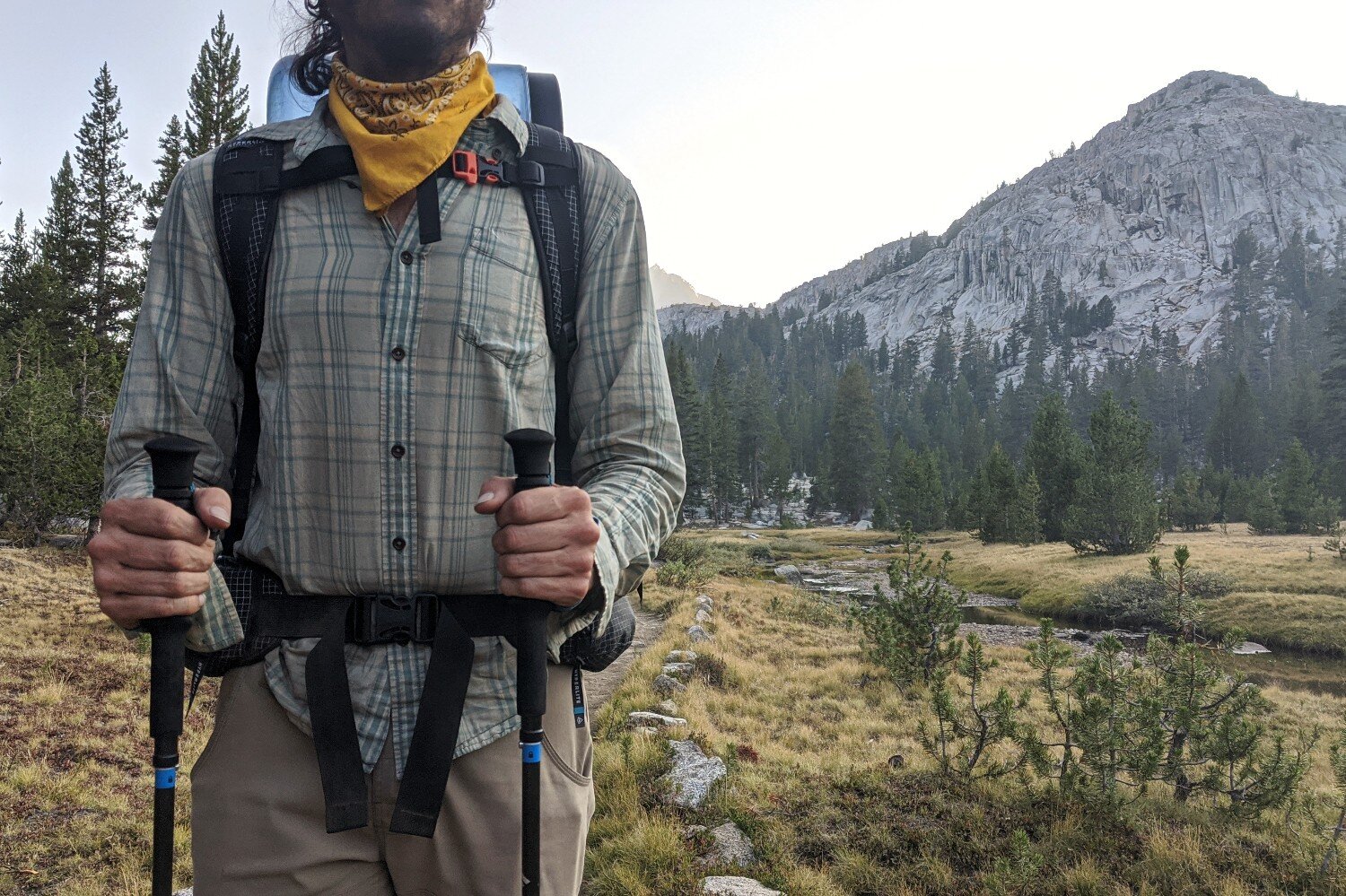
Critical Trekking Pole Considerations
Below, we break down some important things to consider when making a new trekking pole purchase. If you’re still unsure about whether or not hiking with poles is right for you, check out our Pros and Cons of Hiking with Trekking Poles post.
MATERIALS
The two most common materials used for trekking poles are aluminum and carbon fiber. Carbon fiber poles are far lighter, but they’re also more expensive and more likely to break if bent the wrong way with force. Aluminum poles are heavier, but they’re more economical and likely to bend instead of snapping under pressure. Some poles combine both materials, using an aluminum lower shaft with a carbon fiber upper.
POLE DESIGN
- Telescoping: Telescoping trekking poles are the most common option. They usually consist of two or three sections that nest into each other with a locking mechanism to hold them in place when extended. They’re highly adjustable and can pack down small.
- Folding: “Z-type” folding trekking poles usually have three sections that fold to roughly 1/3 of their full length. Held together by an internal tension cord, each section unfolds to create a single shaft when locked into place (similar to a tent pole). Though they pack down small and are often lighter than telescoping poles, most models are not length adjustable. Some folding trekking poles do offer one telescoping section, which will allow you to adjust the length of the pole.
- Fixed: The least common type of trekking poles on the trail is fixed-length, straight shaft trekking poles. They’re not adjustable and don’t collapse, making them difficult to stow away when not in use. Due to their storage impracticality, we don’t really recommend fixed poles.
LOCKING SYSTEMS
Trekking poles have either an internal or external locking system to hold the pole’s sections in place. Internal locking systems usually employ a “twist lock,” which expands a small bracket inside the poles when twisted to hold the sections in place. External locking systems, or “flick locks,” use a lever to put pressure on the shaft and hold both sections in place. Twist locks are slightly more complicated than flick locks, so they tend to have a slight learning curve and aren’t as easy to repair in the field. Flick locks are typically more reliable over time, but we’ve had success with poles using both locking methods.
STRAPS
To use the straps correctly, your hand should enter from below before grabbing the grip. This will create a loop around the back of your hand with two sections of strap running through your palm. This method will allow you to put a lot of pressure from your upper body on the pole, without requiring an exhausting hand grip. Straps are often made of nylon webbing, which can produce chafing. Fleece or soft chamois straps tend to be more comfortable, but they may make your hands sweat in hot weather.
BASKETS
Many poles come with removable baskets (a wide circular plastic section, like on ski poles) near the tips. Their main purpose is to keep the poles from driving too deep in snow, sand, or mud.
TIPS
Pole tips are usually comprised of a plastic body that holds a durable point at the end, typically made of hardened steel. They’re designed to increase stability and traction by biting into dirt, rock, and ice. To maintain optimal functionality, tips should be replaced every 1,500-2,000 miles or so.
SHOCK ABSORBERS
Shock absorbers are small, spring-like mechanisms near the tips of poles that help reduce the impact of striking the ground. Internal shock absorption systems are more common on high-end poles and will increase price and weight. Some people love the cushion they provide, but we generally avoid them. The springs in them create a less secure pole plant and can make ascents a bit more difficult, due to the springs absorbing some of your uphill push. They can also be somewhat squeaky, which can get annoying after a full day on the trail.
ADJUSTMENTS
When properly adjusted, your arms should form a 90-degree bend when the poles are held at your sides with their tips on the ground. It’s important to make sure your poles are adjusted properly and feel comfortable, as you can easily stress your neck, shoulders, and wrists with poles set at an improper height.
When heading uphill, you may want to shorten your poles about 5 to 10 cm. to provide better planting and traction. With slightly shorter poles, you should be able to maintain uphill momentum. When heading downhill, lengthen your poles 5 to 10 cm. to help maintain solid footing and stability.
GENDER SPECIFIC
Some brands offer gender-specific poles, but that mostly amounts to tweaks in color and pole length.The majority of trekking poles are unisex and work equally well for men and women. We recommend buying the ones that fit you best.
ENVIRONMENTAL CONSIDERATION
Trekking poles can cause damage to trails, soil, vegetation, and rocks bordering the trail. High-traffic trails – especially after periods of snow melt or rain – are susceptible to erosion and wash outs. Always be mindful of where you plant your poles and practice LNT backpacking.
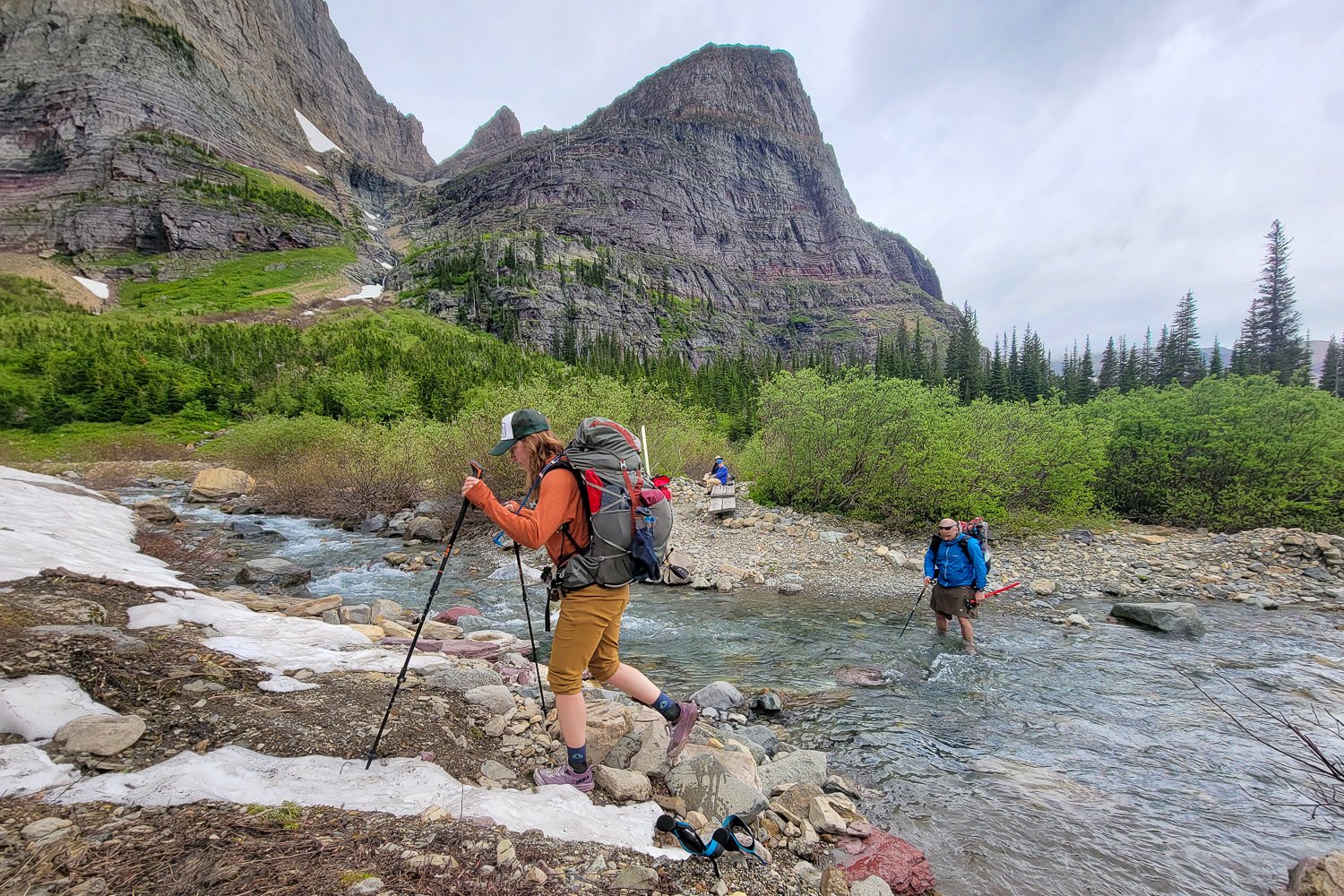
Lightweight Footwear & Trekking Poles Video
As part of our Lightweight Backpacking Gear Basics video series, we put together this video on footwear and trekking poles. Some of our feelings have changed a bit in the years since the making of this video, but there’s still a lot of useful info in there. If you just want trekking pole info, skip to minute 3:40.
Watch the video here.
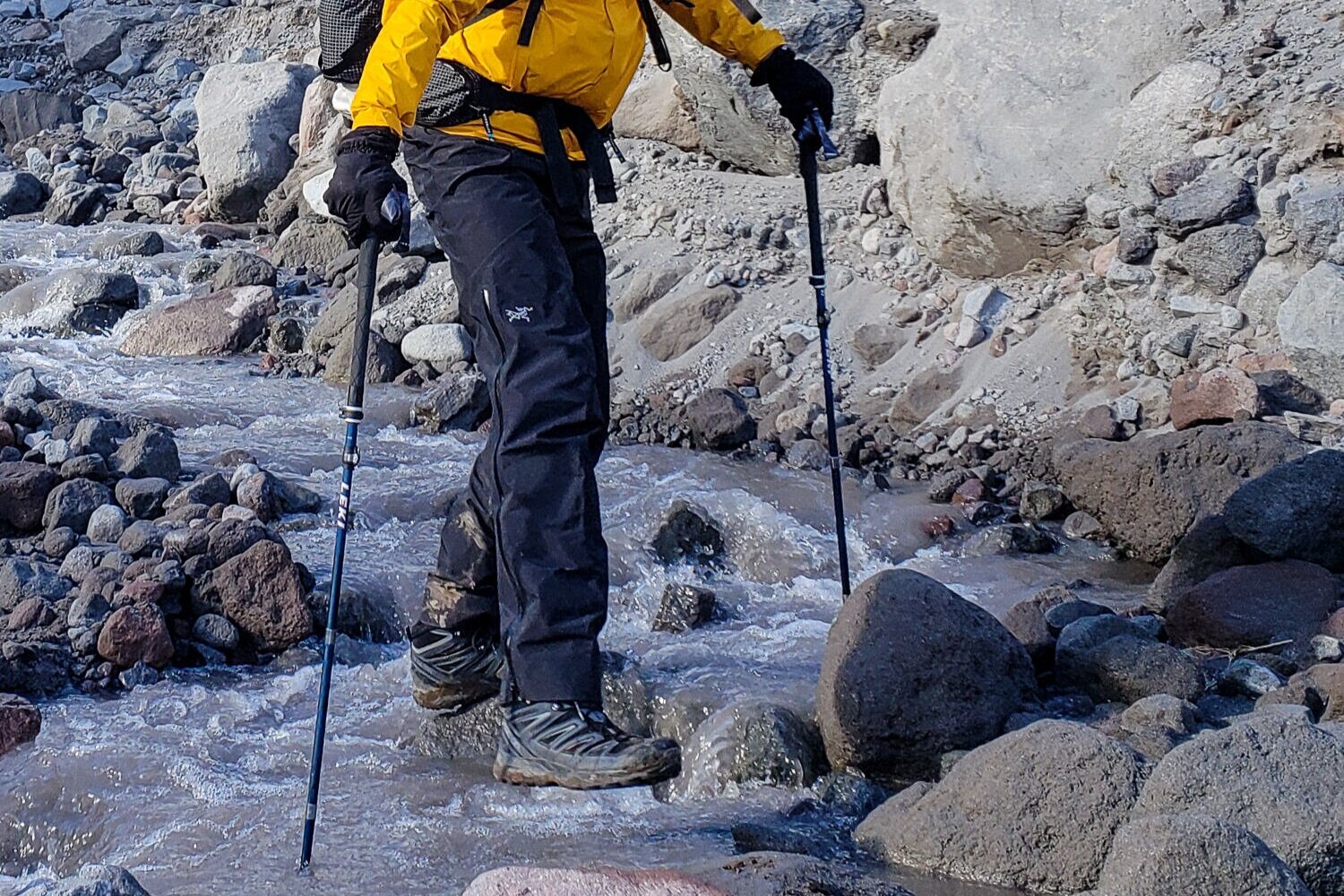
More Information
We hope this guide helps you find the perfect gear for your needs. If you have more questions or a suggestion, we’d love to hear from you! Sign up for our newsletter to stay updated on our latest posts then visit our Facebook page and Instagram to join the community conversation.
If you found this guide helpful, please give it a share on social media! Also, be sure to check out our CleverHiker Gear Guide to see all of our top gear picks.
Thanks for reading and happy trails!

